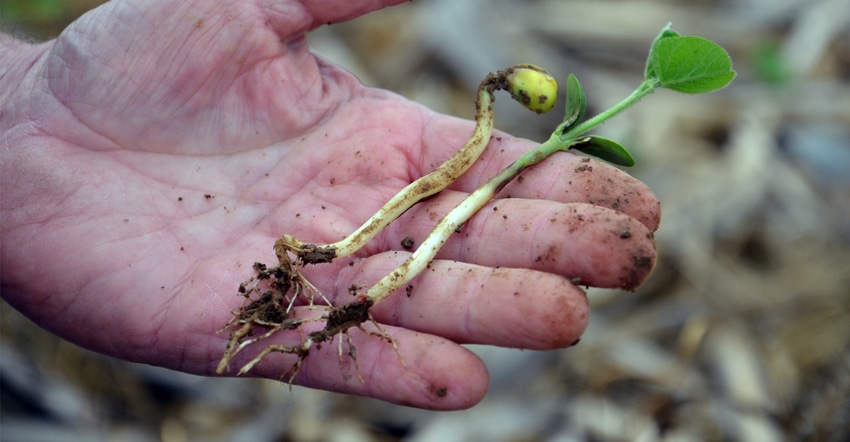
Only a handful of companies make up the biggest players in the herbicide market, but that doesn’t mean there is nothing new under the sun. Weed control specialists say it all depends on your definition of "new." By the time these companies forge agreements with one another and mix newer and older active ingredients together in various formulations, there’s plenty of new information to pass along about weed control for 2017.
What isn’t new is a site of action, Bill Johnson says. The Purdue University Extension weed control specialist says that while companies have introduced lots of new names to the weed control picture over the past couple of years, they have added precious few new active ingredients, and no new sites of action on weeds. Without new sites of action, companies scramble to find combinations that are more effective on tough, resistant weeds in the Corn Belt.
Here are descriptions of some of the newer products and formulations available for weed control in 2017. Johnson and Mark Loux, Ohio State University weed control specialist, provided the information.
• Resicore. The three-way mix includes acetochlor, mesotrione and clopyralid. Dow AgroSciences introduced it in 2016, and it received many favorable reviews. It can be used either pre- or early postemergence in corn, Loux says. If you’re after giant ragweed, the weed specialists suggest adding atrazine for the most effective activity possible.
• Acuron. Syngenta makes this four-way mix for pre or early post application in corn. It includes S-metolachlor, atrazine, mesotrione and bicyclopyrone. Bicyclopyrone is an HPPD inhibitor that works to disrupt activity at Site 27 in plants, Johnson explains. It provides broad-spectrum control of weeds, and is similar to Lexar and Lumax in activity and use, Loux notes. He observes that at times it may be a little better on giant ragweed and other large-seeded broadleaf weeds than Lexar or Lumax. Apply it on corn up to 12 inches tall. It’s labeled only as a preemergence herbicide in sweet corn and yellow popcorn.
• Broad-spectrum corn residuals. Besides those already mentioned, other relatively new choices for residual herbicides in corn include Acuron Flexi, which is Acuron without atrazine; Cinch ATZ plus Instigate; Corvus plus atrazine; Balance Flex plus any atrazine premix; and SureStart plus atrazine.
• Zidua Pro. BASF made additions to Zidua and introduced Zidua Pro. It is positioned as a preemergence soybean herbicide. Zidua Pro replaces Optill Pro, previously offered by BASF.
The active ingredients include pyroxasulfone, which is Zidua; plus salflufenacil, which is Sharpen; plus imazethapyr, which is Pursuit. Yes, both Pursuit and Scepter, two soybean herbicides from the late 1980s, are back in play again for 2017, Johnson notes.
Loux notes that Zidua Pro at the 6-ounce-per-acre rate contains 1 ounce of Sharpen. It can be applied with MSO plus AMS, or 28% nitrogen, as adjuvants.
If you mix Zidua Pro with any product containing flumioxazin, which is Valor; sulfentrazone, which is Authority; or fomesafen, which is available as several trade names, the label requires waiting 30 days before planting soybeans, Loux observes. There is potential for crop injury if weather conditions go awry and you don’t wait the labeled amount of time before planting.
About the Author(s)
You May Also Like




